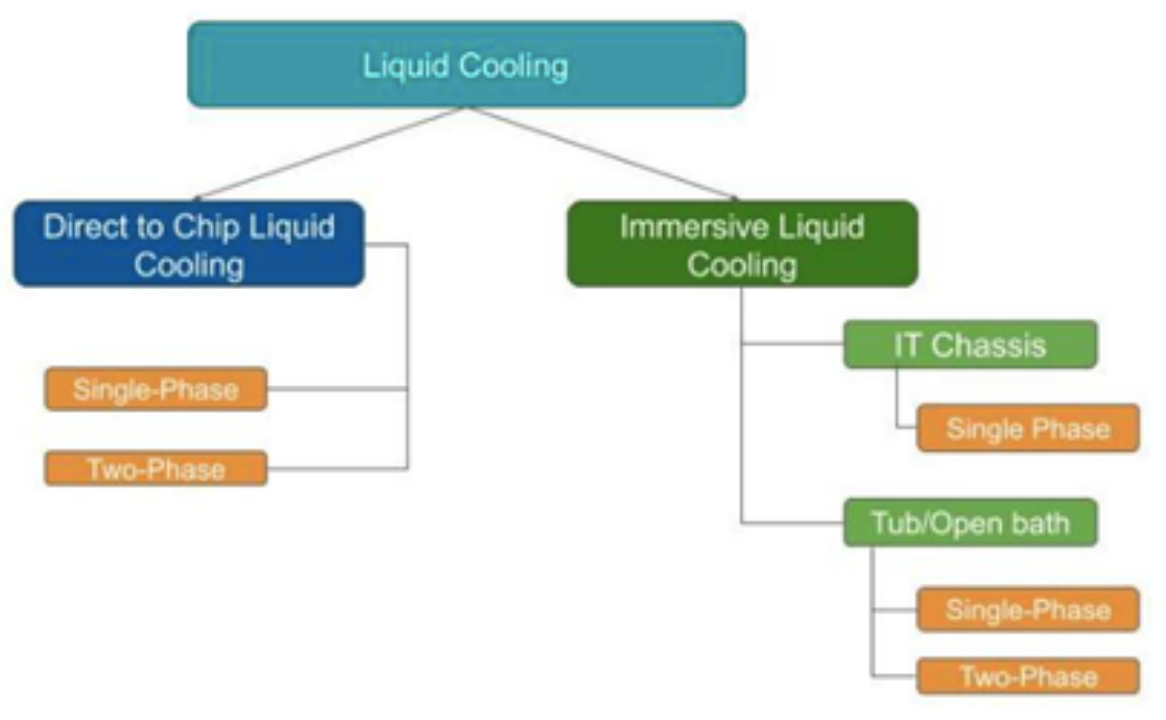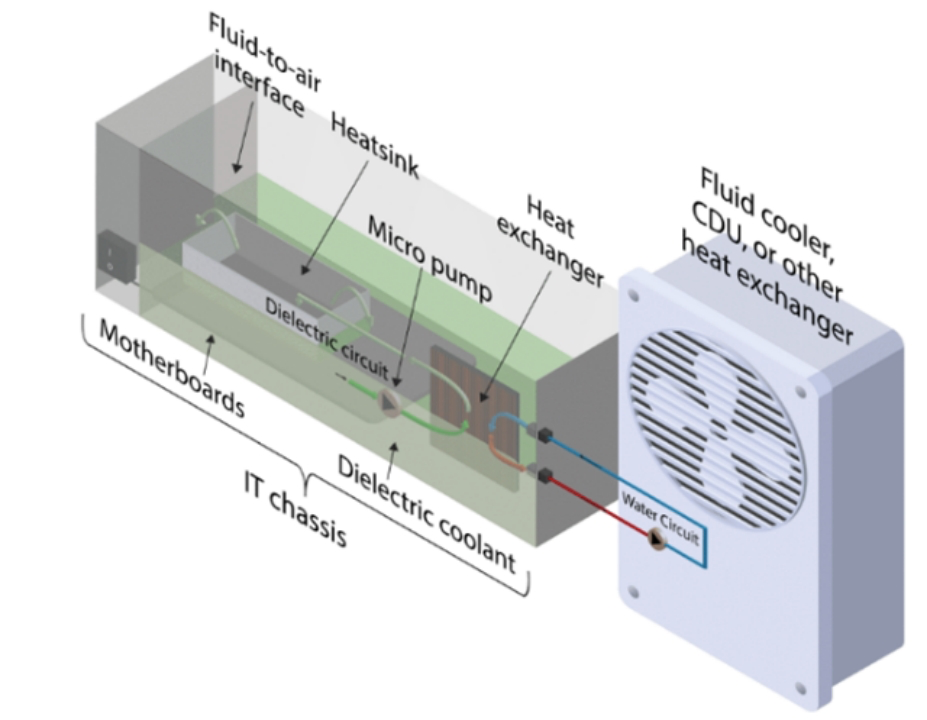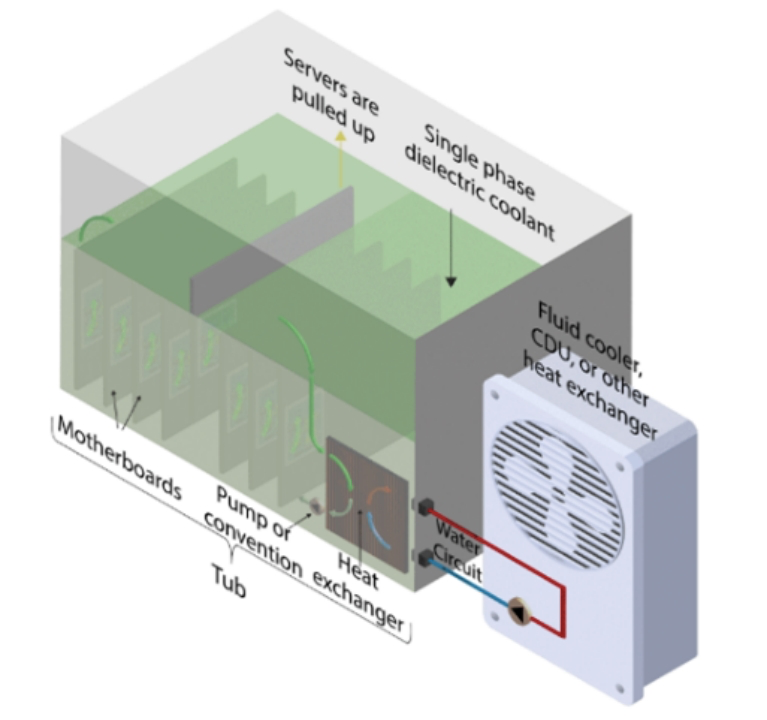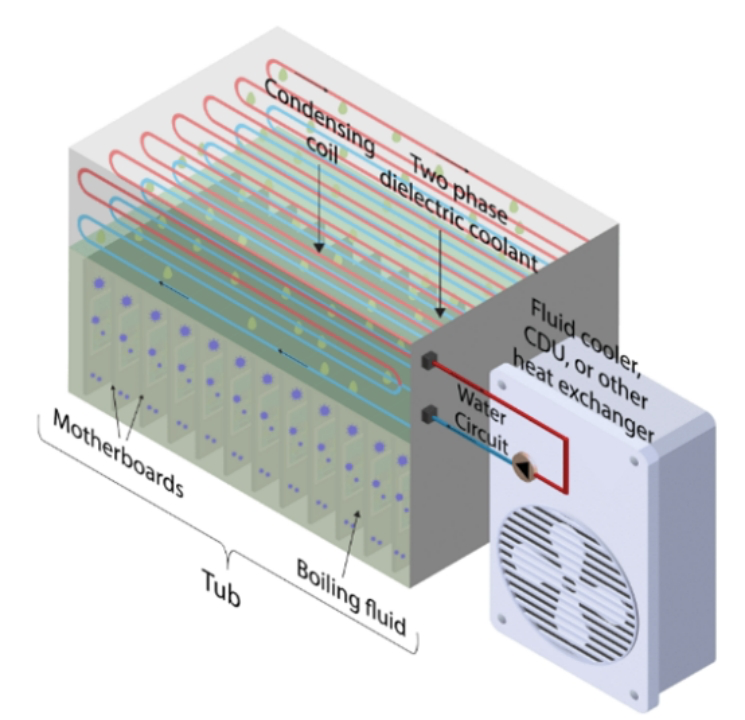Enterprise-Grade Liquid Cooling Solutions

When analyzing liquid cooling options for enterprise-grade IT hardware there are essentially two main categories of liquid cooling – Direct-to-Chip Liquid Cooling (sometimes called conductive or cold plate liquid cooling) and immersive liquid cooling.
When considering the phases (what state the fluid is in – either liquid or gas) that the coolant goes through we have five distinct types of liquid cooling.
Direct-to-Chip Single Phase
This method of cooling requires delivering the liquid coolant directly to the hotter components of a server - CPU or GPU - with a cold plate placed directly on the chip. The electric components are never in direct contact with the coolant.
With this method, fans are still required to provide airflow through the server to remove the residual heat. While the air-cooling infrastructure is greatly reduced, one is still required for the correct operation of this liquid cooling method.
Coolants can be either water or dielectric fluids, but water will infer a downtime risk of leakage, however, Leak Prevention Systems (LPS) are available. Single phase refers to the fact that the coolant does not change states - i.e from a liquid to a gas.
This is also the same method used in the previous desktop PC example.
Direct-to-Chip – Two-Phase
The two-phase direct-to-chip liquid cooling method works like the previous single-phase method, the only difference being that the liquid coolant changes states - from a gas to a liquid and vice-versa as it completes the cooling loop. These systems will always use engineered dielectric fluid.
In terms of heat-rejection, two-phase systems are better than single-phase systems and have a lower risk of leakage due to the coolant's state-changing nature. They do however require additional controls which will increase maintenance costs over the lifetime of the system.
Immersive Liquid Cooling – IT-Chassis Single-Phase
 This cooling approach uses a single-phase dielectric fluid and is in direct contact with IT components. Servers are fully or partially immersed in this non-conductive liquid within the chassis effectively removing all sources of heat.
This cooling approach uses a single-phase dielectric fluid and is in direct contact with IT components. Servers are fully or partially immersed in this non-conductive liquid within the chassis effectively removing all sources of heat.
The cooling can happen either passively via conduction or actively pumped. Both heat exchangers and pumps can be found inside the chassis or in a side arrangement where the heat is transferred from the liquid to a water loop.
This approach also involves no fans, so its operation is nearly silent (0 dB). In contrast, some air-cooled facilities can reach upwards of 80 dB in the data hall with workers requiring hearing protection for longer exposures.
Immersion Cooling – Open Tub – Single-Phase
 Sometimes referred to as an "open bath,” this immersive liquid cooling method involves the IT equipment being completely submerged in fluid.
Sometimes referred to as an "open bath,” this immersive liquid cooling method involves the IT equipment being completely submerged in fluid.
Essentially, it is a rack turned on its back, filled with dielectric fluid - instead of mounting servers horizontally, they are now mounted vertically.
These systems are usually fitted with centralized power supplies and the natural dielectric fluid is cooled off through a heat exchanger using a pump which can be installed either inside or outside the tub, or by convection.
Immersion Cooling – Open Tub – Two-Phase
 As with Single-Phase, in this method the IT equipment is completely submerged in fluid vertically within a tank. But, importantly with this approach, the dielectric fluid must be capable of changing states from liquid to gas as it heats up.
As with Single-Phase, in this method the IT equipment is completely submerged in fluid vertically within a tank. But, importantly with this approach, the dielectric fluid must be capable of changing states from liquid to gas as it heats up.
In such a system, submerged and exposed parts will create heat, turning the liquid into a gas, which rises to the surface and condenses on a coil, falling naturally back down once it cools off enough by turning back into a liquid state.
 中文
中文



.png) Search
Search


 >
>  Return to List
Return to List